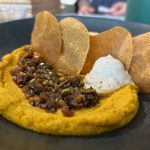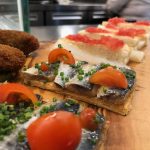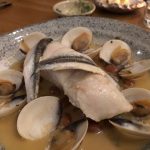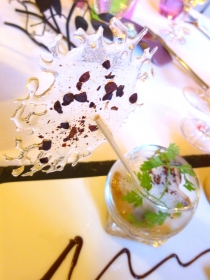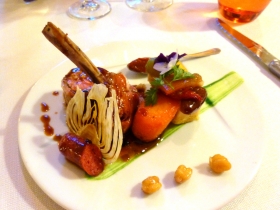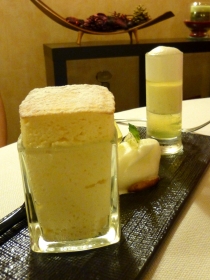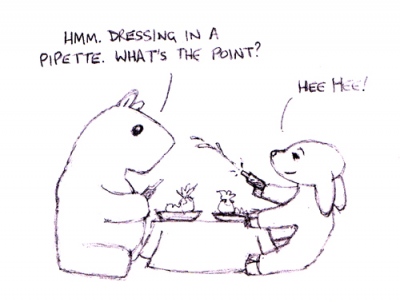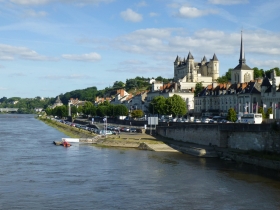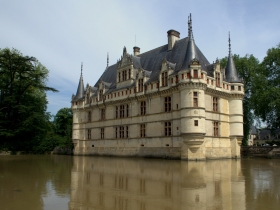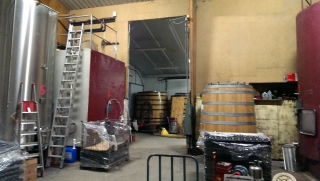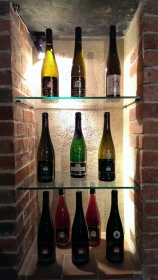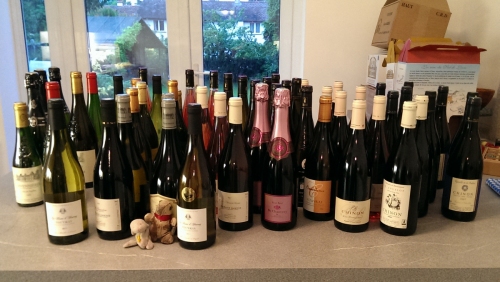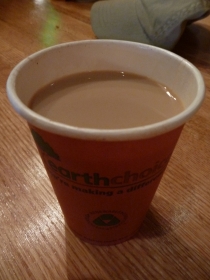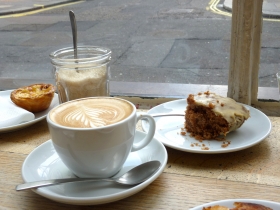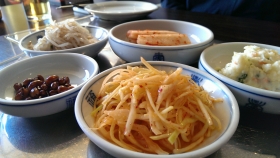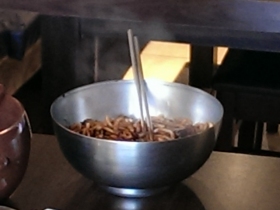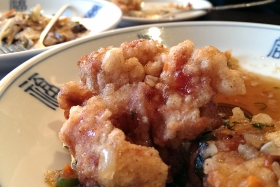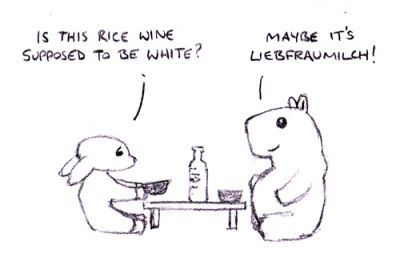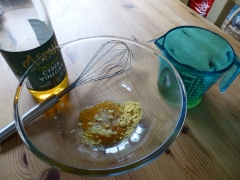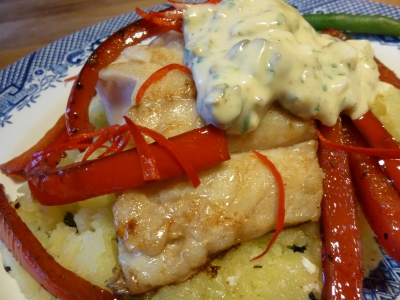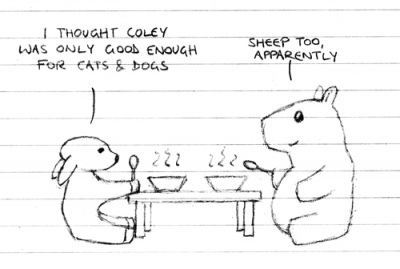We had a wonderful meal in Saumur, one that really reaffirmed my faith in French cooking after our culinary washout of a trip last year. Unfortunately this wasn’t the meal I’m reviewing here*. I enjoyed dining at Le Gambetta, but it was a frustrating mixture of the jolly good and the merely okay.
The restaurant is in a town house and the decor is light and traditional. Service was effortless all evening, by which I mean the staff made no effort at all to establish a friendly rapport with us. Entirely professional and decent, but nothing more. There we are.
Our amuse bouche was a fairly forgettable bit of dressed crab with a thai-flavoured madeleine. The starters, however, were a really exciting eyeful. My trio of foie gras was beautifully presented and included a scrumptious concoction of confit orange, pan-fried foie gras and chocolate. In fact all three elements were magic. Maureen’s lobster came two ways; on a bruschetta of fennel with a pipette of impressively infused lobster oil, and cooked in a bag with a spicy celery jambalaya. This was a strong dish, in fact the first course was rather unfortunately almost the highlight of the meal.
My fish course was a piece of turbot with an uninspiring soft crust, served with stringy white asparagus and a bitter sauce that I failed to identify. The accompanying Argan-oil foam was a frothy punch of intriguing flavour, but the rest of the dish I couldn’t love. Maureen’s rolled fillet of brill came in a delightfully fragrant Thai broth. The menu proudly noted that it was “cooked at 45C with Hawaiian black salt” but since the result seemed to be an unexpected dense roll of well-cooked fish I’m not sure the effort was worth it.
For the main course we both picked veal. I normally wouldn’t, in France, but we had a translation failure. The dish was “noix de veau” (nuts of veal, eh?) and when we asked our waiter what part of the animal that was, he definitely seemed to give a knowing smile when he replied “it is the best part”. Well, a nudge is as good as a wink. We thought we were going to get goolies, but in fact we got fillet. Nicely cooked, though the bacon stuffing was a bit salty and the dish otherwise didn’t consist of anything very interesting; few peas, bit of non-descript puree. The other main was a Moroccan-inspired lamb dish that our friends enjoyed much more.
Best dish of the meal? The cheese course, which was a little yogurt pot filled with warm, gooey, ripe reblochon topped with a creamy olive emulsion. It was the definition of funky.
My dessert was a lovely idea on paper; themes of chocolate and tarragon. But in the event the chocolate elements were thoroughly rich and gooey, against which the light and delicately flavoured tarragon (a cream and a sorbet) didn’t stand a chance. It was like throwing snowballs into lava. We took the wine pairings with this meal, and I’ve got to note that I’ve never been offered a more frankly bizarre wine pairing than a crisp, dry sparkling white with a rich chocolate pud. Doubly odd that Maureen got the same bubbly with her lemon and lime dessert; a richly lemon curd-y souffle with a pipette of kaffir lime oil (mmm… good), a bright kaffir lime sorbet and a layered lime jelly with a lemon foam.
This was a beautifully presented meal, but quite a few dishes fell short of their ambition and for this reason it wasn’t really worth the 78 euros each (without drinks) that they’re asking. However, the ambition and invention is lively enough that I do think on a different night Le Gambetta might put out a very memorable meal. So I wouldn’t count it out, if you’re planning a trip to the Loire and want to take a chance.
* – if you are ever in Saumur, definitely book a table at L’Escargot for a dinner of perfectly executed French cooking, mostly classic, served up with great local wines and at a very delicious price.


